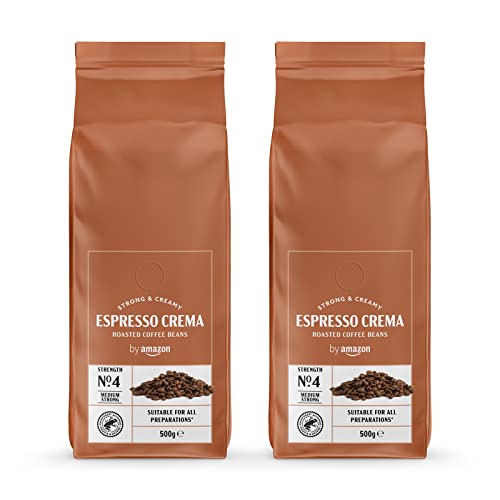The Benefits and Side Effects of Coffee Beans
Coffee beans provide a myriad of health benefits, including improved cognitive function and lower risk of heart disease. However, too much coffee can cause adverse effects, such as anxiety and sleep issues.
The coffee's taste can be affected by the soil as well as the elevation and cultivation methods. The variety of plant also affects the taste.
Origin
The seeds of the tropical evergreen plant that produces coffee beans are referred to as coffee beans. They are roasted and ground to make the most well-known coffee drink, which is enjoyed throughout the world. Coffee is the third most popular drink and one of its most profitable commodities. The caffeine alkaloid is the reason for the invigorating effects of coffee.
The most well-known tale of the coffee's beginnings is that of an Abyssinian goat herder named Kaldi, who noticed his animals getting lively after eating berries of certain plants. The berries he ate proved to be stimulating and began cultivating the plant.
In the 16th century, coffee travelled eastwards, eventually reaching the Arabian Peninsula, where it was cultivated in the Yemeni region. The first coffee houses established. These establishments were from the taverns in Europe, and focused on deep discussion and fast-paced thinking.
The majority of the coffee that is produced today is derived from two distinct varieties of plants referred to as Arabica and Robusta. They grow best in the region known as the Bean Belt which stretches the globe between the Tropic of Cancer and Capricorn.
Types
There are a variety of coffee beans, and each type is distinct in its flavor profile. The region in which the beans are grown may influence their flavor. Ethiopian coffee, for example, is known for its floral notes and citrus in the same way, while Colombian beans are full-bodied with a strong acidity and an acidity that is balanced.
Some coffee beans are processed to enhance the flavor. Some beans are dried, roasted, and then ground. Others are frozen and then ground at a later date. Depulping is a method that involves polishing beans to remove the silvery skin. The beans are then graded and sorted according to weight and size, with any defects are removed by hand or through a machine.
In contrast to the Arabica plant, Robusta plants can grow at lower elevations, and are more resistant to pests. They are also more caffeine-rich than Arabica beans and are often used in instants or blends. However more and more coffee lovers are enjoying the distinct flavor and superior quality of single origin coffees.
Flavor
Coffee beans can be infused in different flavors to add new flavors to drinks, desserts and food recipes. The kind of coffee bean that is suitable for a particular recipe will depend on the flavor profile it is intended to have and the method in which it is utilized.
The coffee bean is a plant that contains pollysaccharides along with other proteins, sugars and minerals, as well as lipids. The seed is protected by silverskin, which is removed during roasting. When the seeds are heated they begin a series reactions which produce their flavor, aroma, and color.
The coffee purists believe that natural flavors of coffee are the most appealing. It is possible to flavor roast coffee beans using artificial flavors. To add flavor to a batch, the roaster sprays flavored oil on the beans. The oil flavored with flavor will be added to the beans to ensure that it is evenly dispersed. The beans are then cooled, ground, and then packaged. The coffee beans that are flavored can be brewed to make an iced cup of flavored coffee or consumed as snacks without brewing.
Health benefits
Coffee beans are a good source of caffeine, a potent stimulant that improves mood and boost energy levels. They also contain phenolic compounds, which are antioxidants that shield cells from injury. According to the National Institutes of Health, these compounds are linked to lower risk of developing heart disease and cancer.
The coffee seeds plant are in a fruit which looks like the shape of a cherry. The fruit typically contains two seeds that are laid flat against eachother. However, some fruit have only one seed, which is known as a berry. Peaberries yield a weaker and less tasty cup.
Roasting coffee beans changes their taste and makes them more appealing to the palate. Roasting gourmet coffee beans makes them easier to digest by the body.
Coffee beans contain phenolic compounds that block the formation of glucose in the liver. They also lower cholesterol levels. They may also reduce the risk of nonalcoholic fatty cirrhosis and non-alcoholic liver disease. Coffee beans are a great source of potassium, riboflavin, and B vitamins, and are high in fiber.

Side effects
The seeds of the coffee plant are frequently ground and brewed into a popular beverage. Coffee consumption is associated with a lower risk of developing type 2 diabetes and liver disease. However, the caffeine in coffee brewed can trigger undesirable side effects like jitters, heartburn and high blood pressure for some people. Green coffee bean extract is a caffeine-free option that has shown to have many of the same benefits as brewed coffee without the negative side effects.
Coffee beans are a rich source of nonvolatile and volatile compounds that protect them from the effects of oxidation, insecticides and diseases. These chemicals also contribute towards their flavor. Nonvolatile substances form a waxy cover on the surface of the coffee beans. This covers deter many insects from consuming the beans and helps the beans to retain moisture.
Roasting coffee beans converts fatty acids into energy. This energy boosts mental performance. It also aids in the release of adrenaline, which is a hormone that prepares the body for physical exertion. Additionally the chlorogenic acid found in green coffee beans can reduce fat absorption and slow down sugar release from the digestive tract.
